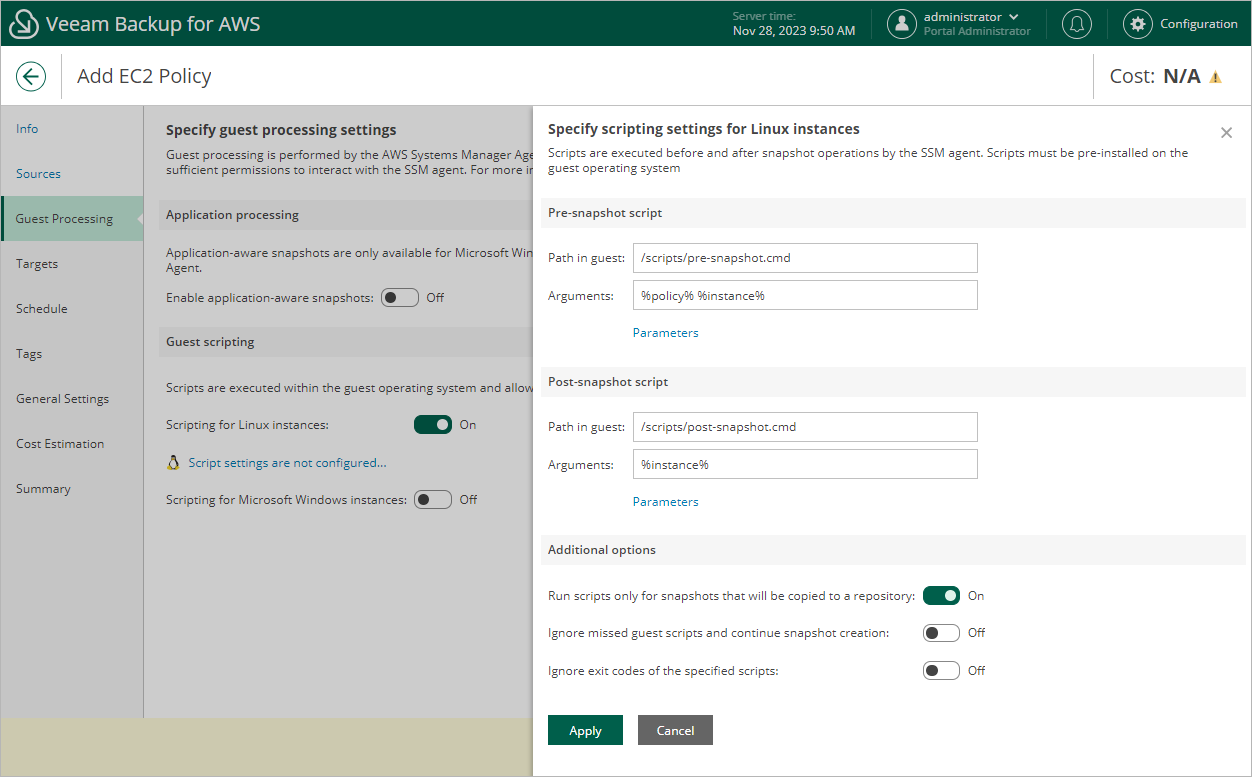 This is an archive version of the document. To get the most up-to-date information, see the current version.
This is an archive version of the document. To get the most up-to-date information, see the current version.Enabling Guest Scripting
To enable guest scripting for processed EC2 instances, at the Guest Processing step of the wizard:
- For EC2 instances running Linux OS, set the Scripting for Linux instances toggle to On.
The Specify scripting settings for Linux instances window will open.
- For EC2 instances running Microsoft Windows OS, set the Scripting for Microsoft Windows instances toggle to On.
The Specify scripting settings for Microsoft Windows instances window will open.
Important |
Supported script formats:
|
In the opened window, specify pre-snapshot and post-snapshot scripts that must be executed before and after the backup operation:
- In the Pre-snapshot script section, do the following:
- In the Path in guest field, specify a path to the pre-snapshot script file on an EC2 instance.
- In the Arguments field, specify additional arguments that must be passed to the script when the script is executed.
You can use runtime variables as arguments for the script. To see the list of available variables, click Parameters.
Note |
Veeam Backup for AWS will run the script residing in the specified directory for all EC2 instances added to the backup policy. If you want to execute different scripts for different EC2 instances, ensure that script files uploaded to these instances are located under the same path and have the same name. |
- Repeat step 1 for post-snapshot scripts in the Post-snapshot script section.
- In the Additional Options section, choose whether you want to run scripts only while creating snapshot replicas, to proceed with snapshot creation even though scripts are missing on some of the processed instances, and to ignore exit codes returned while executing the scripts.
- Click Apply.
